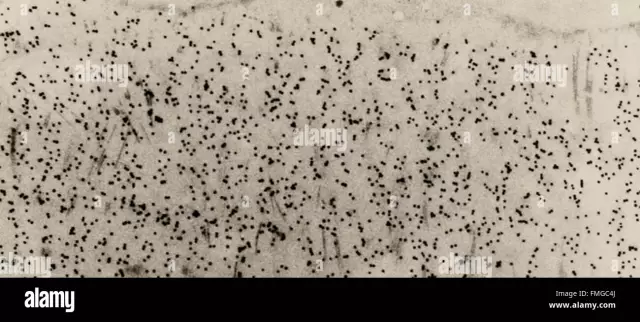- Author Rachel Wainwright [email protected].
- Public 2023-12-15 07:39.
- Last modified 2025-11-02 20:14.
Cytological examination

In the course of a cytological study, the structure of cells is studied to identify malignant, benign tumors and lesions of a non-tumor nature. The main purpose of the study is to confirm or deny the fact of malignancy of the cells taken for analysis.
Methods of cytological research are based on studying under a microscope the structure of cells, the cellular composition of fluids and tissues.
There are such methods of cytological studies:
- light microscopy;
- electron microscopy;
- centrifugation method. It is used when it is necessary to separate the cell membranes from the general structure;
- tagged atom method. It is used to study biochemical processes in cells: for this, a labeled radioactive isotope is introduced into them;
- lifetime study. This research method allows you to study the dynamic processes occurring in the cell.
The conclusion of the cytological study is based on the features of changes in the cytoplasm, cell nucleus, nuclear-cytoplasmic ratio, the formation of complexes and cell structures.
A cytological analysis is used during a routine examination, to clarify the diagnosis, during an operation, for the timely detection of relapses, and control over the course of treatment.
Cytological examination of smears
The following materials are used for analysis:
- liquids: urine, prostate secretions, phlegm, washings obtained during endoscopy of various organs, nipple discharge, imprints and scrapings from ulcerative and eroded surfaces, wounds and fistulas, fluids from serous and articular cavities;
- punctates: biological materials obtained with a diagnostic puncture carried out with a thin needle;
- smears from the cavity and cervix.

Most of these cytological examinations of smears are carried out, if necessary, to establish and clarify the diagnosis. But a cytological examination of a smear from the cervix (Pap smear) is recommended: once a year - for women after 19 years of age who are sexually active; twice a year - for women taking hormonal contraceptives who have had genital herpes; more than twice a year - women who suffer from infertility, uterine bleeding, obesity, who often change sexual partners, take estrogens, who have warts on their genitals, genital herpes has been identified.
Cytological examination of the cervix
For cytological examination of the cervix, a smear is taken from the outer and inner parts of the cervix and from the fornix of the vagina using a special wooden spatula. Then it is transferred to glass and fixed.
A cytological examination of the cervix is performed to detect cancerous changes in cells, and in conclusion, the doctor indicates one of five stages of the state of the cells:
- Stage 1. No abnormal cells found;
- stage 2. There are minor changes in the structure of cells caused by inflammation of the internal genital organs. Such a state of cells does not cause fear, but a woman is recommended to undergo additional examination and treatment;
- Stage 3. Found a small number of cells with deviations in the structure. In this case, it is recommended to take a smear again or conduct a histological examination of the altered tissue;
- stage 4. Found individual cells with malignant changes. The final diagnosis is not made, an additional examination is prescribed;
- Stage 5. The smear contains a large number of cancer cells.
The reliability of such a cytological study is high, but it can only give information about the site from which the cells were taken for analysis. In order to assess the condition of the fallopian tubes, ovaries, uterus, you should undergo a comprehensive examination.
Found a mistake in the text? Select it and press Ctrl + Enter.






